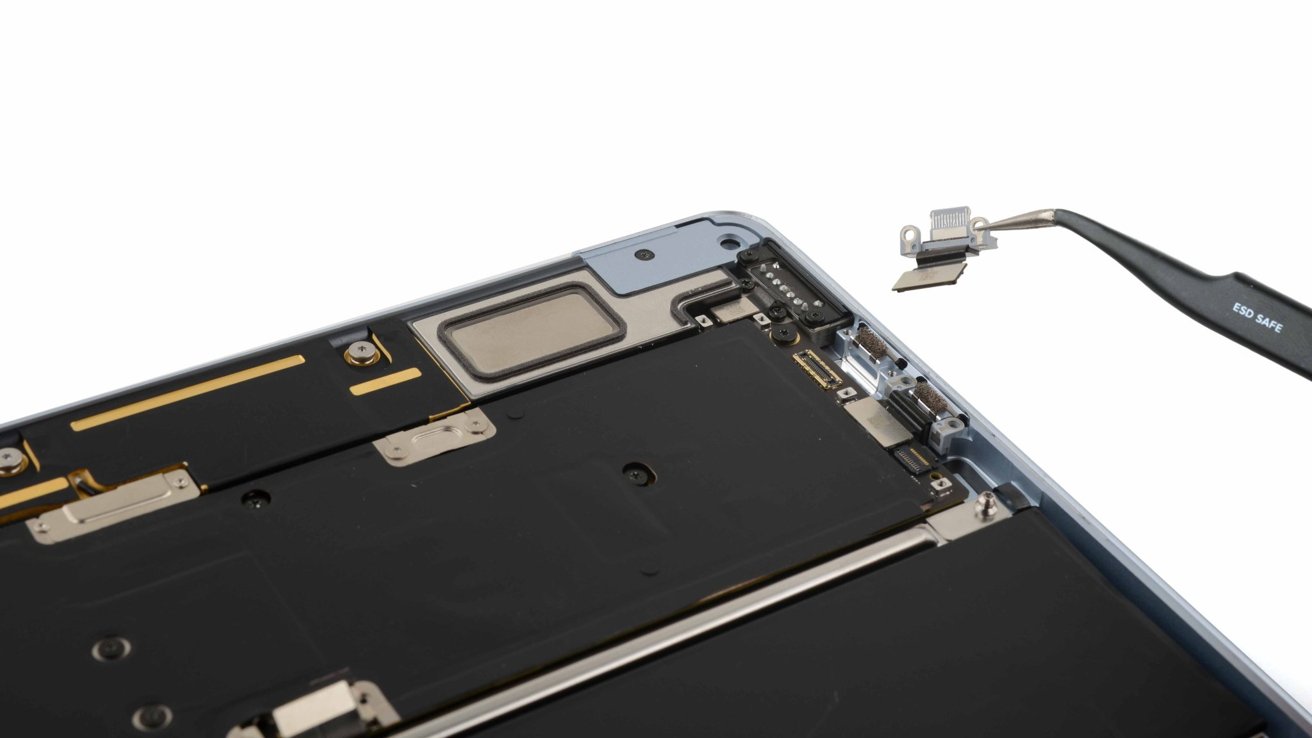M4 MacBook Air teardown reveals it's just as easy to repair as its predecessor
Apple's latest M4 MacBook Air is just as repairable as the previous two iterations, as a teardown of the device shows no major changes from the M2 model.

Apple's M4 MacBook Air uses the same chassis as the previous two generations. Image Credit -- iFixit
The new MacBook Air, with an M4 system-on-chip, was announced on March 5, 2025. Though the laptop features an upgraded 12MP front camera with center stage support and is available in a new Sky Blue color option, it's practically identical to the M3 MacBook Air. The new-and-improved MacBook Air is even available in the same 13-inch and 15-inch sizes as its predecessor.
As was noted by iFixit in a teardown of the M4 MacBook Air, the device uses the same chassis as the M2 MacBook Air, which was introduced in 2022. This means that the entire disassembly process remains unchanged, with the laptop's USB-C ports being just as easily replaceable as they were before.
The battery on the M4 MacBook Air is held in place by the same stretch release tabs found in the previous generation. While the iPhone 16 range features a special type of adhesive that can be released with electricity, this change hasn't yet made its way to the MacBook Air.
The Touch ID power button, however, remains as difficult to remove as ever, as the laptop's entire top case must be disassembled before it can be taken out. The same goes for the keyboard of the M4 MacBook Air.
Though the laptop doesn't appear to have any significant structural or design changes, Apple has published a repair manual for the recently released MacBook Air. In theory, anyone should be able to replace parts on their MacBook Air, but sometimes that doesn't quite work.
iFixit swapped the logic boards between two identical M4 MacBook Airs and experienced calibration issues with the ambient light sensor. Despite using Apple's System Calibration tool, and both laptops being fully operational, the display's True Tone feature could not be activated.
Though the M4 MacBook Air offers performance improvements and better external display support over previous models, the NAND chips are still soldered onto the logic board. This means that the storage is not user-upgradeable, which is no surprise.
The consensus among reviewers is that the M4 MacBook Air is little more than a spec upgrade. It introduces some welcome changes but is otherwise unremarkable, given that it contains no surprise upgrades.
Read on AppleInsider


Comments
Apple's emphasis on energy management and cooling systems makes it the CLEAR winner across the entire industry when it comes to notebooks and their battery life. Intel and AMD just can't come close on these fronts.
I don't have access to any "Ultra" M-series chips nor any need for them myself, but the reading I've done suggests that the M3 Ultra beats the best Intel and AMD have to offer by significant double-digits overall on multi-core. That's really pretty incredible, particularly when you remember that M-chips didn't exist in the market in 2019.
Apple shocked the entire industry back in 2013 when it released the A7 SoC, the first 64-bit processor widely deployed in a mobile device, the iPhone 5s. It was a mic drop moment for anyone following semiconductors. The rest of the industry was stunned into silence.
That was five years after Apple had acquired P.A. Semi (for $278 million back in 2008). It was clear to industry observers that the acquisition would take years before it showed any impact.
A handful of people speculated back then that Apple's chip efforts would eventually lead to notebook and desktop computing. When Apple announced Apple Silicon in the form of the M1 SoC, it was pretty much a fait accompli. They had already moved to in-house graphics architecture and included machine learning transistors (the Neural Engine debuted in 2017).
When I look at the M4 family, I think "well, duh, they have been doing this for a looooong time. A good iterative improvement."
Apple now has five and ten year milestones since the P.A. Semi acquisition. For sure there is a roadmap somewhere in Apple that has milestone goals for 15 and 20 years after the P.A. Semi deal.
And it is wrong to focus on just the CPU or fixate on Macs.
We are seeing innovative silicon elsewhere from Apple. The S-series silicon in Apple Watch (now in its tenth generation), the H-series silicon in AirPods (two generations) and now the recently revealed C1 modem chip. There's a U-series chip in the AirPods Pro charging case, who knows what the next version will do? And at some point Apple is going to put a smarter chip in a future version of the AirTag.